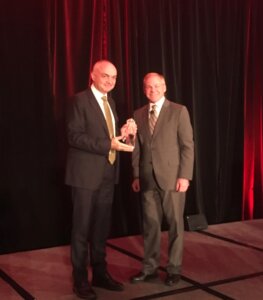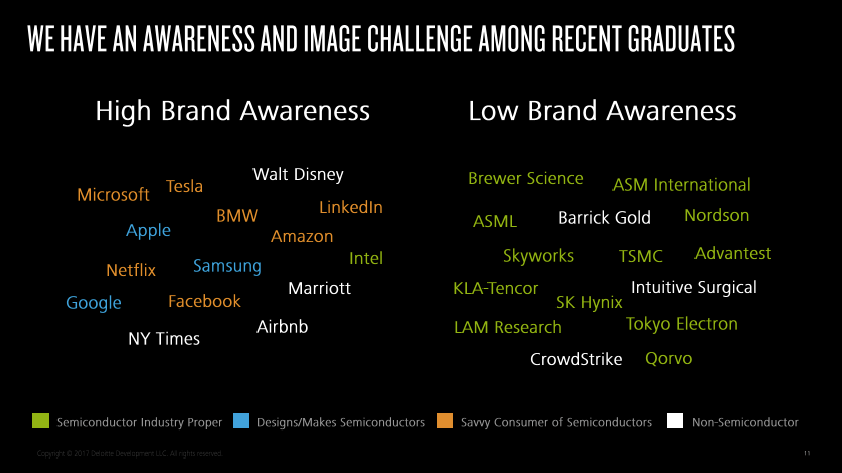The remaining two days of SEMI’s ISS 2018 dawned foggy and damp, making it a heck of a lot easier to head to the ballroom for a day and half full of inspiring talks versus ditching it all to answer the call of the pounding surf (I grew up on the ocean and now live in the desert, so trust me when I say the temptation was real.)

Day Two started with a general technology session kicked off by Luc van den hove, imec, who noted the unprecedented accelerated pace of new technology introductions. He said Moore’s law will continue with the help of “scaling boosters”. His keynote was followed by updates on EUV, specialty materials, fan-out wafer level packaging, and quantum computing.
The afternoon session was dedicated to my favorite topic of the week, social disruptions by technology, featuring Rob High, who runs the Watson R&D lab at IBM, and Bhaskar Chakravorti, the Business Dean at The Fletcher School at Tufts University. In the space of these two presentations, we had, on the one hand, someone telling us that AI is not to be feared. On the other, what the societal implications really are and that there is cause for concern.
The final morning brought a mix a mix of workforce development discussions, (one of SEMI’s current key initiatives) and a keynote that reinforced the messages we heard on day one. ISS 2018 wrapped up with a panel discussion that unraveled the mysteries of technology nodes and debated whether the industry is continuing down Moore’s law path. From my perspective, here are the highlights, lowlights, and Aha moments of the last two days.
Highlights
From Peter Jenkins, ASML and Scotten Jones, IC Knowledge, we learned that EUV lithography is transitioning from R&D and preparing for ramp up at 7nm insertion points.
Rob High attempted to dispel our wild imaginings of a dystopian future run by artificial intelligence. “Cognitive systems are here to amplify human cognition. Not to take our jobs or the eliminate population.” Good to know.
Conversely, Bhaskar Chakravorti served up a hefty dose of real concern about the societal, political and economic consequences of our digital world.
Lowlights
VLSI’s Andrea Lati cautioned us that after two years of unprecedented growth in equipment spending, suppliers should prepare for a 20% decline in equipment spending in 2019, as a correction.
Deloitte Consulting’s Chris Richard shared the results of a perception audit from which the determined that 77% of participants see a talent shortage in the semiconductor industry. We have an awareness and image challenge among recent graduates that must be addressed. We must tackle this challenge with rigor, discipline, and stick-to-it-ness with which we tackle our industry’s design, technology, and operations challenges.

Aha Moments
Chakravorti’s presentation was so full of Aha! moments that I could devote a whole blog post to the topic and might just do that.
Dan Durn, Applied Materials, offered an impassioned plea to the industry to join him and Applied Materials in committing themselves collaborate in the “war for talent”. This is essential for industry growth and will help secure a better future for our industry. Rick Merritt, EETImes, captured the story quite eloquently here.
In his talk, Dr. Hermann Eul of Eul Ventures summed up a number of Aha moments from the last two days so well, that I’m compelled to share them here:
- AI will be a macro-trend that will not only be integrated into everything we do, calling for more compute power but will also impact how we do things.
- The car is about to lose the most important, most complete sensor device it has: the driver. Our work is cut out for us to replace them effectively with sensors that can hear, see, compute, and act.
- In our digital world, there is no place left untouched by semiconductors. However, this incredible opportunity to change the world for the better could all go away if we don’t figure out the security problem. We need to pay much more attention to security at the architectural level than we ever did before.
And lastly, thanks to the amazing talents of our evening entertainment; comedian, mentalist, and speaker, Paul Draper; we learned that a Ph.D. in cognitive anthropology provides the unique skill set that makes you the life of the party in a room full of high-powered geeks. Seriously, he was impressive and stumped us all.
To me, these were the significant moments of the last two days, but by no means everything that was discussed this week at ISS 2018. If you missed Day 1, you’ll find it here. I’ll be diving deeper into these in my full report from SEMI ISS 2018 ~ FvT



















